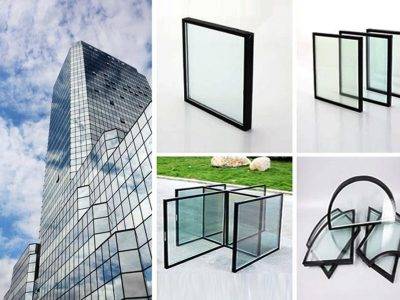Description
Laminated Glass: Safety, Security, and Sound Control in One
Laminated glass is a sophisticated product offering superior performance compared to traditional annealed glass. It's engineered by bonding two or more layers of glass with a tough, transparent interlayer, typically polyvinyl butyral (PVB) or ethylene-vinyl acetate (EVA). This seemingly simple construction results in a material with significantly enhanced properties, making it ideal for a wide range of applications.
Unmatched Safety and Security:
- Impact Resistance: The interlayer acts as a strong adhesive, holding the glass fragments together even after impact. This prevents shattering and reduces the risk of injury from sharp shards, making it a crucial safety feature for applications like windows, doors, and skylights in high-traffic areas or where children are present. It significantly increases resistance to forced entry, enhancing security.
- Burglary Deterrent: Laminated glass offers superior resistance to forced entry compared to standard glass. The interlayer makes it much more difficult to break through, delaying intruders and providing valuable time for response.
- Protection from Vandalism: Its increased strength makes it significantly more resistant to vandalism attempts, reducing damage and associated repair costs.
Beyond Safety: Enhanced Performance:
- Noise Reduction: The interlayer helps to significantly dampen sound transmission, making laminated glass ideal for noise-sensitive environments such as homes near busy roads, apartments, or recording studios. This acoustic advantage translates to a quieter and more peaceful atmosphere.
- UV Protection: The interlayer blocks a substantial amount of harmful ultraviolet (UV) radiation, protecting interior furnishings, artwork, and occupants from sun damage and fading. This extends the lifespan of your valuable possessions and reduces the risk of sunburns.
- Increased Weather Resistance: Laminated glass provides better resistance to wind and extreme temperatures, ensuring greater durability and longevity.
- Aesthetic Versatility: Laminated glass is available in a range of thicknesses, tints, and patterns, offering flexibility in design and style to suit various architectural preferences and aesthetics. It can even incorporate decorative interlayers for unique visual effects.
Applications:
Laminated glass is suitable for a variety of applications, including:
- Residential Buildings: Windows, doors, skylights, shower enclosures, balustrades
- Commercial Buildings: Windows, facades, partitions, security glazing, shopfronts
- Automotive Industry: Windshields, side windows
- Museums and Galleries: Protective glazing for artwork and exhibits
- Security Applications: Bullet-resistant glass, security windows and doors
Specifications:
While specific specifications vary depending on the manufacturer and application, key factors to consider include:
- Glass Thickness: Ranges from 2mm to 25mm or more, depending on the required level of security and sound insulation.
- Interlayer Type: Typically PVB or EVA, each offering slightly different properties.
- Tint and Color: Available in clear, tinted, and decorative options.
Choosing the Right Laminated Glass:
Selecting the appropriate laminated glass depends on your specific needs and requirements. Consult with a qualified glazing professional to determine the optimal thickness, interlayer type, and other specifications for your project to ensure you receive the best possible performance and safety.
